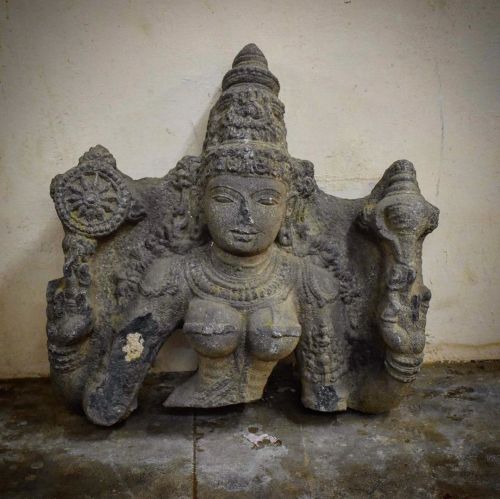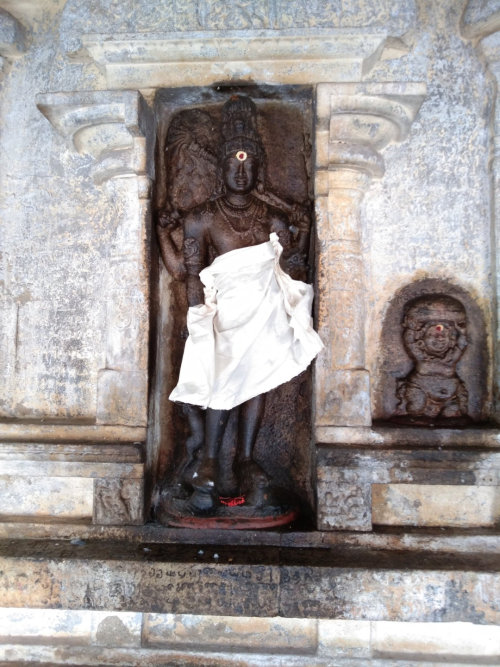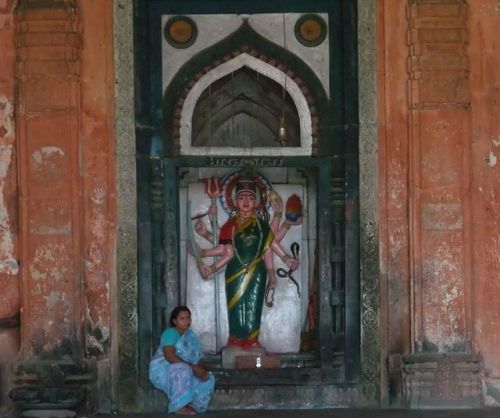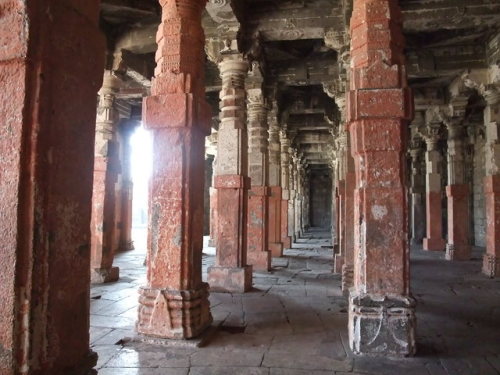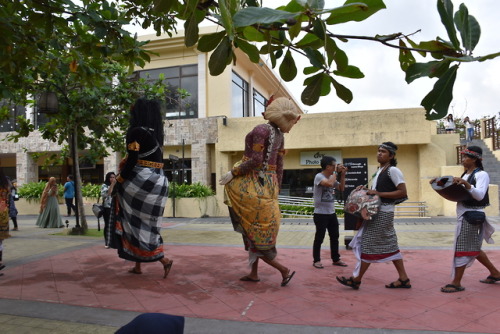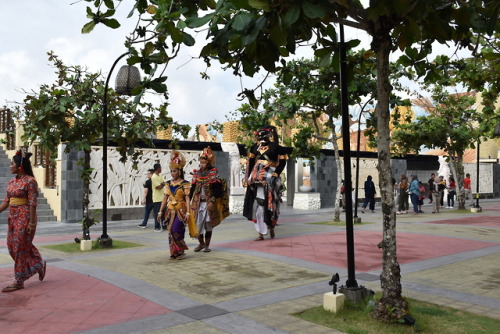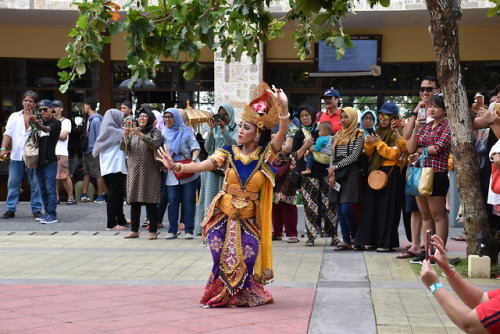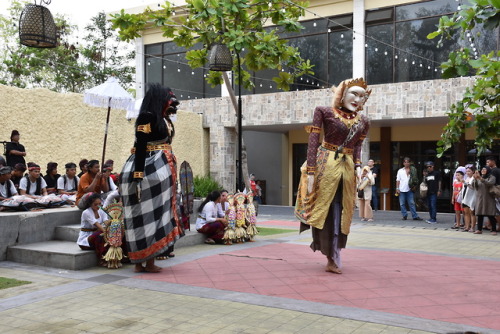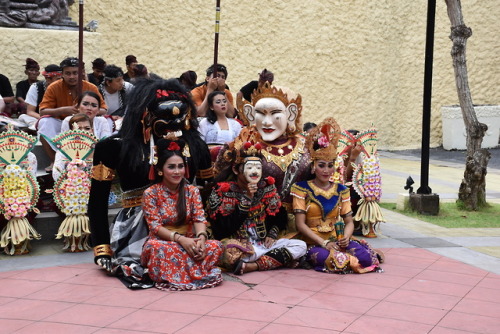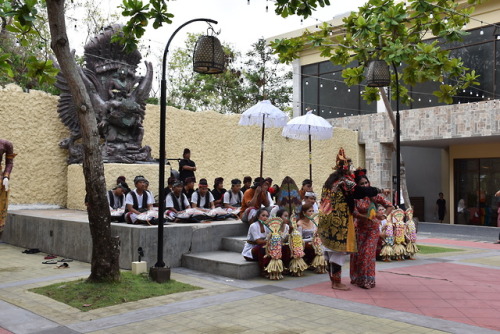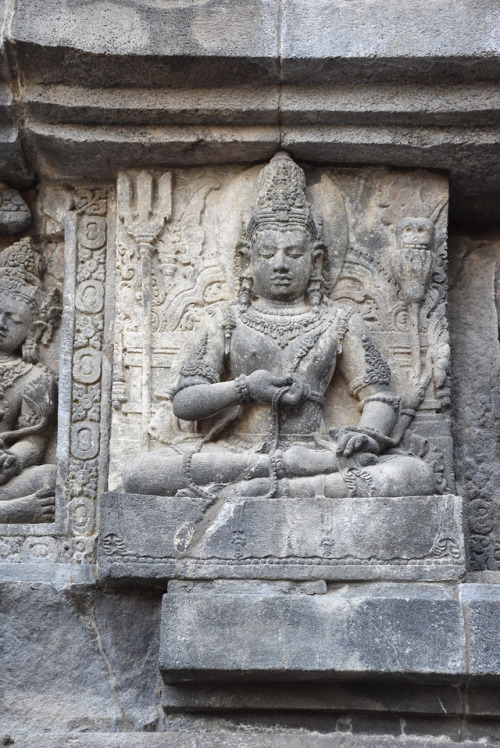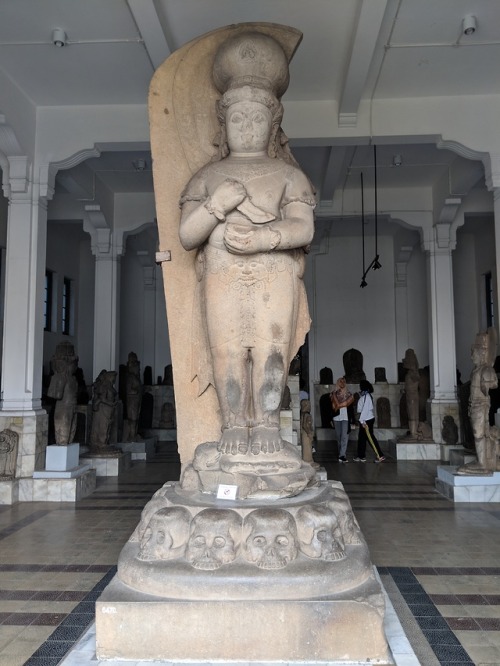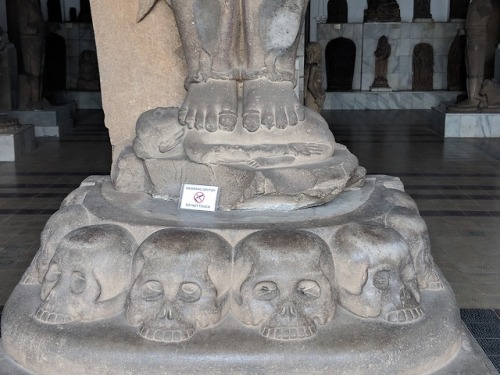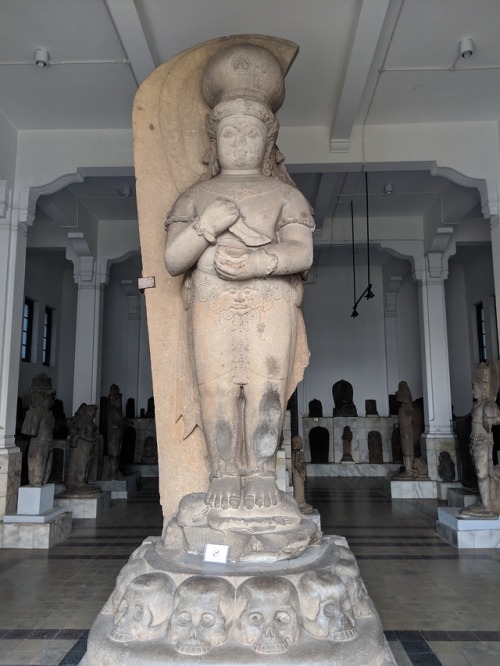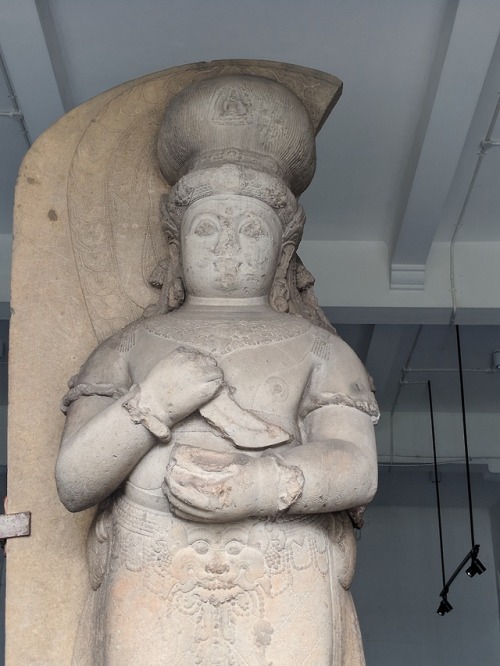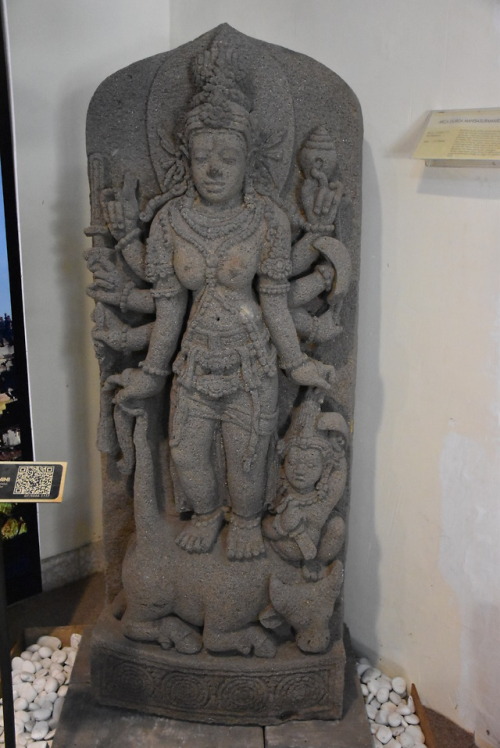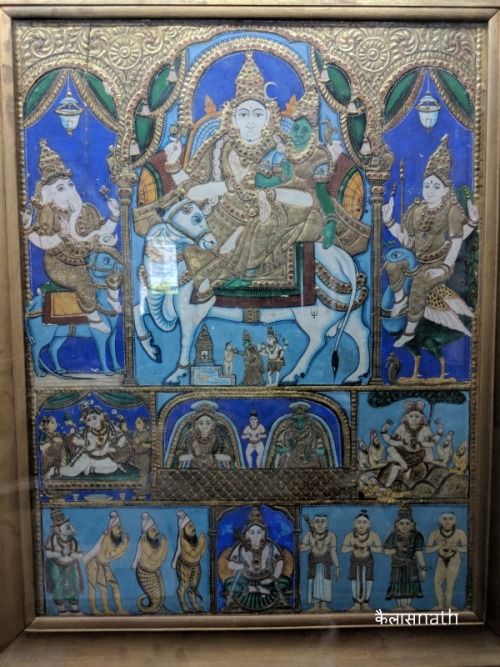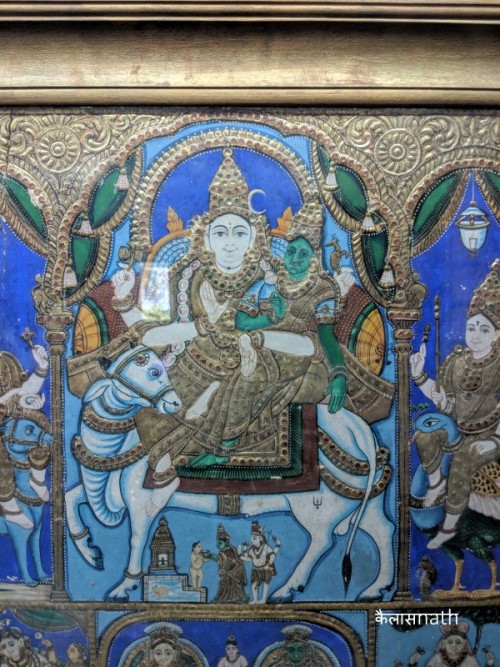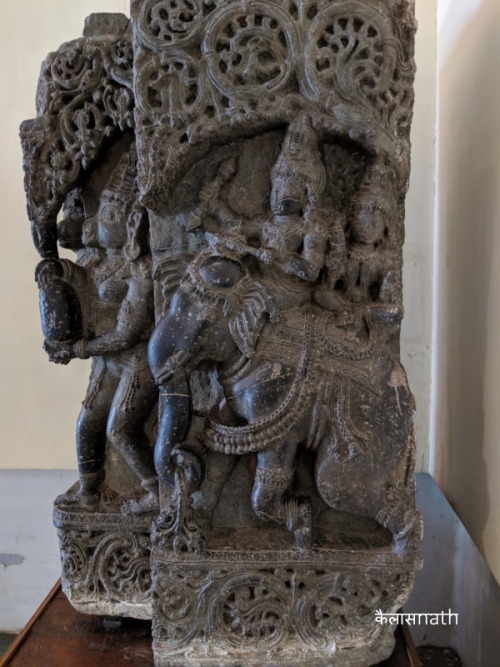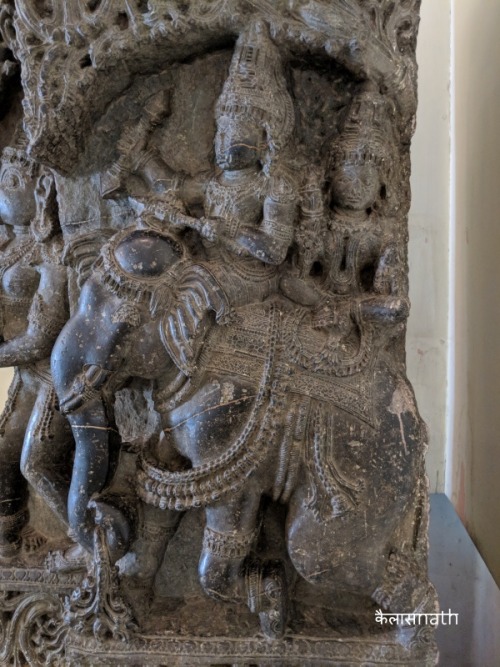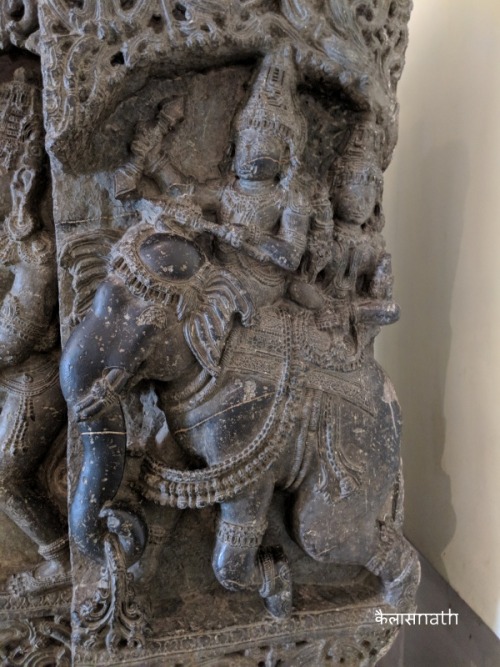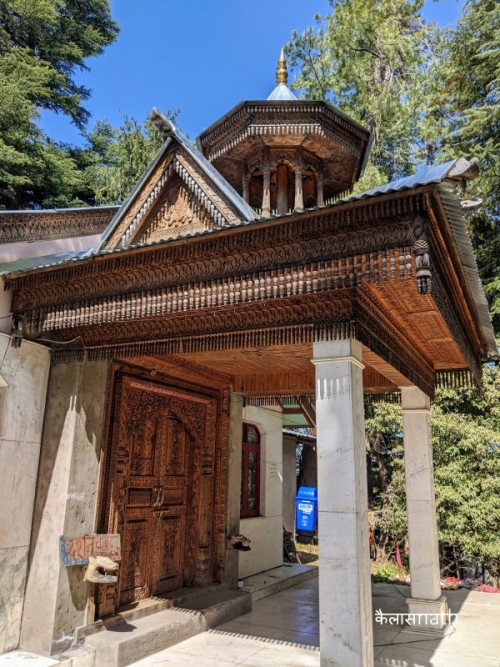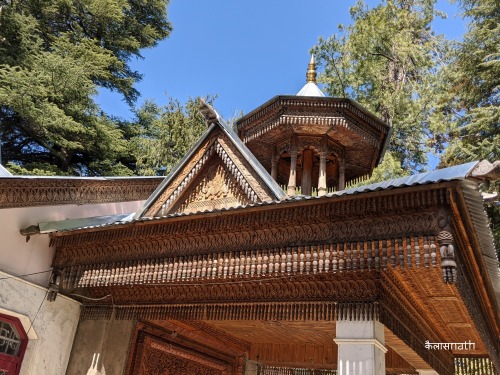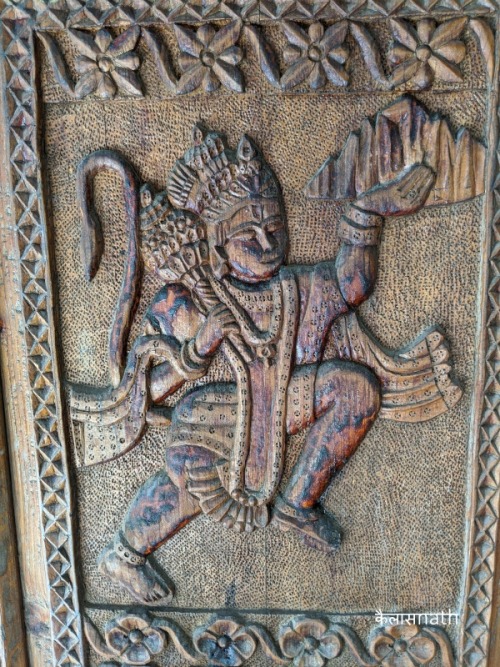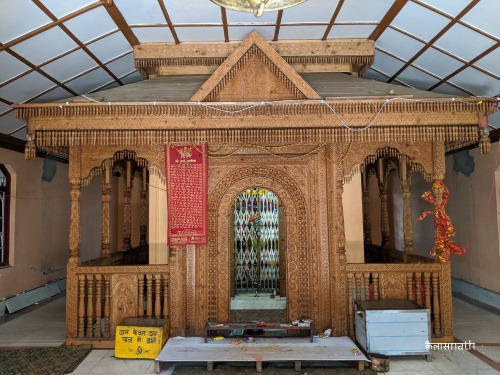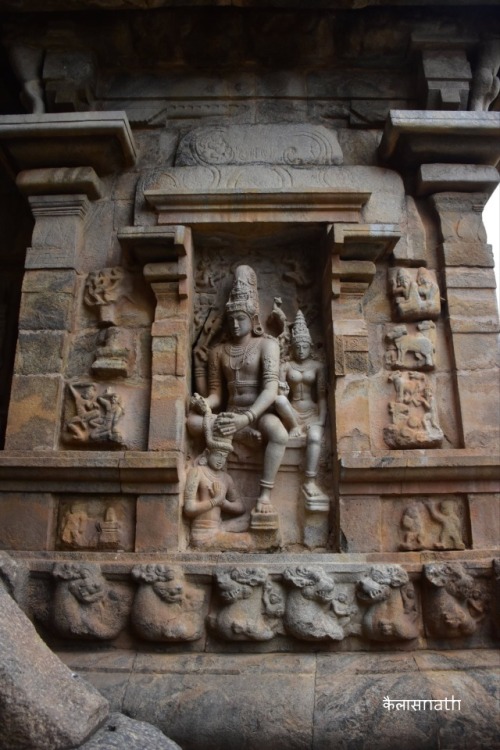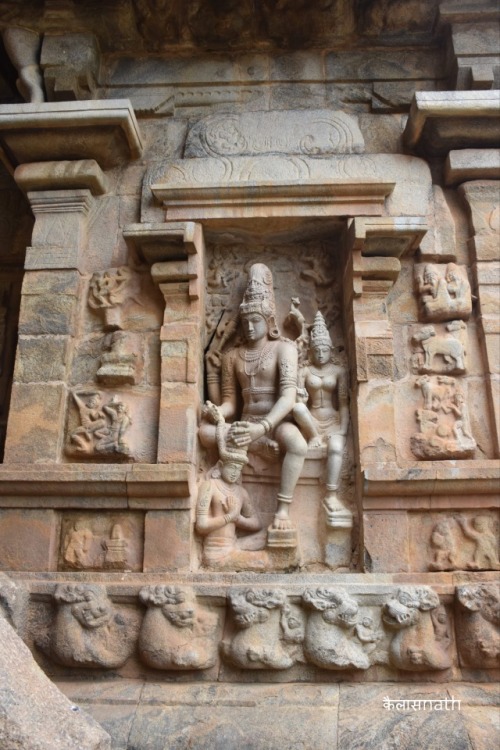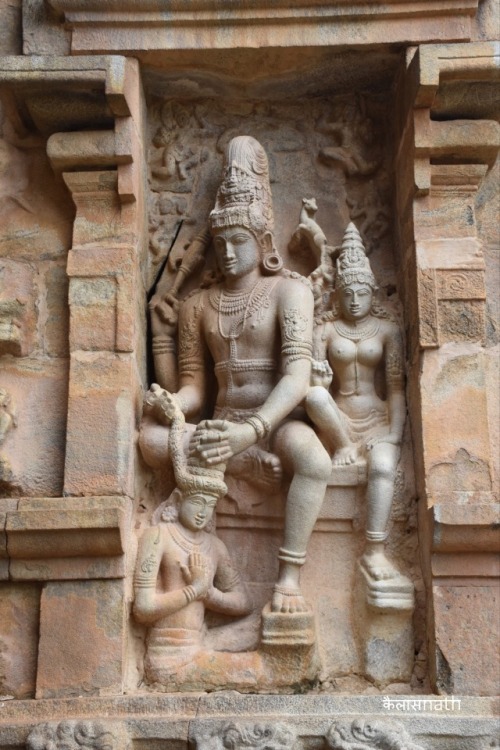#hinduism
Devi Vaishnavi (one of the Saptamatrikas) or Vishnu Durgai
11th Century, Chola Era
The broken nature of this exquisite sculpture makes it difficult to be certain which form of the Goddess the Vigraha represents. This is one of the several beautiful but broken sculptures lying in the under-resourced and ramshackle Government Museum at the site of the magnificent Chola Monument of Gangaikonda. (at Gangaikondapuram, Tamil Nadu, India)
Post link



Varada Vinayagar
Lord Ganesha, the giver of blessings, Lord of Obstacles.
Contemporary woodwork, Chennai Airport
Bhārata MātāTemple
A small shrine to Bhārata Mātā – Mother India stands inside what was once a mosque in the outer courtyard of the DaulatābādorDeogirī Fort. The styling of the pillars gives reason to believe this was once a Hindu temple, repurposed into a mosque after conquest by Allauddin Khilji. The Bhārata Mātā shrine is believed to have been created after Independence as a secular shrine to avoid controversies.
Daulatabad Fort
Post link
Balinese Ramayana
Across South East Asia, the Epic tale of the Ramayana inspires traditional dance performances. Here is a Balinese group performing at the Garuda Wisnu Kenchana (GWK) Cultural Park.
Post link
Īśāna – Lokapāla and Guardian of the Northeast
Relief on panel in the outer parikrama of the central temple dedicated to Lord Śiva in the great Trimūrtī temple complex of Prambanan, central Java.
Lokapālasor guardian deities of the cardinal directions is a concept common to Buddhist temple architecture. Īśāna is often associated with the Yakṣa Kubera – the Lord of Wealth and divine treasurer. Whilethetriśūla or trident is sometimes an attribute of Īśāna absence of vāhana is unusual.
The Prambanan Temple Complex was built Circa 850 CE by the Sanjaya Dynasty of Medang, Central Java
Post link
वेदमनूच्याचार्योन्तेवामिनमनुशास्ति ॥
सत्यं वद । धर्मं चर ॥
स्वाध्यायान्मा प्रमदः ।
आचार्याय प्रियं धनमाहृत्य प्रजातन्तुं मा व्यवच्छेत्सीः ।
सत्यान्न प्रमदितव्यम् । धर्मान्न प्रमदितव्यम् ।
कुशलान्न प्रमदितव्यम् । भूत्यै न प्रमदितव्यम् ।
स्वाध्यायप्रवचनाभ्यां न प्रमदितव्यम् । देवपितृकार्याभ्यां न प्रमदितव्यम् ॥
मातृदेवो भव । पितृदेवो भव । आचार्यदेवो भव । अतिथिदेवो भव ॥
Having taught the Vedas, the Ācārya thus enjoins the āśramaresidents:
Speak truth; walk in dharma (do your duty; do righteous acts) |
Be not heedless of self-study |
Having given agreeable wealth to the ācārya, do not sever the line of descendants |
Never fall from truth; never fall from dharma (duty, righteousness) |
Never overlook your own welfare (self-care), never neglect your prosperity;
Never neglect self-study and propagation (of the Vedas, of knowledge) |
Never neglect works (your duty) for the Gods and for the Fathers (ancestors) |
Treat your mother, father, teachers and guests like deities |
Taittirīya Upaniṣad, Śikṣā-valli, Ekādaśa Anuvākaḥ
Based on a translation by Swami Chinmayananda
A traditional temple dedicated to Lord Śṛī Viṣṇu in the pañcāyatana style – a set of five temples with the large central shrine of the chief deity surrounded by four smaller temples dedicated to other deities – Gaṇeśa,Śaktī,SūryaandŚiva. Nearby rock edicts place these temples around later part of the 11th Century CE. Some of the last monuments of the Gurjara – Pratihāraera.


For a minor temple, the decorations outside the maṅḍapa is not lavishly decorated.

The temple seems to be in use to this day with some care and whitewashing upkeep, though the metal protective door for the sanctum sanctorum looks crude.

The kneeling Garuḍa looks newly installed.

It is unclear if the black polished granite four-armed caturbhuja icon dates back to the 11th Century - but this too minor a temple to have attracted the looting vandalism of Islamic invaders.

The smaller temple dedicated to the mother goddess. The white stone image of the goddess is almost certainly of recent origin … .


… as are the much cruder images of Lord Gaṇeśa.

Bhairava Buddha
A unique representation of a combined Hindu – Buddhist deity combining aspects of the Hindu deity Lord Śiva in his fierce Bhairava form with the Buddha. This giant image is believed to be the likeness of Ādityavarman – a Majāpahit nobleman. THis image hints at the high level of fusion of the various Indic traditions found in ancient South East Asia.
Circa 14th Century CE, West Sumatra
National Museum Gajah Madah, Jakarta
Post link
Devī Durgā Mahiśāsuramardinī
A magnificent stone sculpture of the Goddess Durgā slaying the buffalo-demon Mahiśāsura. The Devī is depicted in her eight-armed (aṣṭabhuja) form – she holds the demon Mahiśā by his hair as he emerges from the buffalo form as she readies to strike the fatal blow.
Durgā Mahiśāsuramardinī was popularly worshipped across the Hindu kingdoms of Java throughout the Hindu – Buddhist period.
This well-preserved icon from the Prambanan complex probably belongs to the 9th or 10th Century CE.
Post link
Shiva Parivar
Tanjore painting panel depicting Uma Maheshwara astride Nandi, flanked by Ganesha and Skanda. Circa 18th Century
Government Museum, Bangalore
Post link
IndraandSachi
Indra deva, the lord of paradise and his consort Devi Sachi astride their vahana the elephant Airavata. Indra is depicted wielding the vajra thunderbolt.
Hoysala style, circa 12th Century CE
Government Museum, Bangalore
Post link
Talāī Bhadrakālī Mañdir
In the town of Talāī,MāśobrānearŚimlā amidst the pine and deodar trees is this shrine to Devī Bhadrakālī,the benevolent protective form of Devī Mahākālī.
The present temple is of somewhat recent provenance but the pahāḍī architecture and styling made of ornately carved wood is of highly traditional design. The sloping roof is designed for snow to slide off; the ornate carvings depict geometrical patterns as well as images of Hindu deities.
Post link



The daliances of Radha and Shri Krishna
Radha playfully mock whips Shri Krishna with her dupatta. Folio from Geeta Govinda manuscript - the second work on this theme - from Guler.
The second generation of masters after Manaku and Nainsukh, circa 1775 - 1780 CE
Pahari style, Guler
Collection of Horst Metzger
Following up on my earlier post on the cluster of five temples that constitute the Mālvaṇ Deuḷwāḍā, the first i.e., oldest, and foremost temple is that of Śṛī Deva Rāmeśwara, dedicated to Lord Śiva Mahādeva as the patron deity or Iṣṭadeva of Lord Śṛī Rāma–ĪśwaraofRāmawhenceRāmeśwara. The first recorded large temple in the spot was built circa 1920.

The temple is described as jāgṛt – literally meaning ‘awakened’, conveys that devotees report feeling the presence of the deity in this shrine.
The Gāvkar clan has the honour and responsibility of keeping the temple functioning and well maintained (मानकरी). The shrine also has designated person for worship ritual (पुजारी), recitation of holy texts (पुराणिक) and performance of sacred songs (कीर्तनकार) – all these roles are fulfilled by families residing in Deuḷwāḍā.The present temple was renovated around 10 years ago and has two spacious halls leading up to the sanctum sanctorum (गर्भगृह) which are used for congregations and worship rituals.
The tiled floor and concrete pillars replace the older stone flooring and wooden pillars.

Back in the day menfolk in the neighbourhood often took some light bedding to sleep in the out hall of the temple on hot summer nights - when the stone and wooden temple with high ceiling would often be cooler than their homes. No one was supposed to sleep in the centre of the hall though. According to legend, that was the path the the devchār - the king of ghosts - tread at the stroke of midnight as he walked in to prostrate himself before Lord Śiva. Any impudent human sleeping in the path would be kicked out of the way!
The ornate tiling in the inner hall is where the purāṇik - the reader of sacred texts purāṇik - sits facing the deity.

The sanctum sanctorum where is installed the sacred deity.

In front of the temple stand the tipor – pillars of light which are lit up with oil lamps Mahā Śivarātrī; behind the tipor is the nagārkhānā formerly used to house the musical instruments for the temple (drums and trumpets), this now has a loudspeaker.

The outer entrance is decorated with stucco images framed in a kīrtimukha, a clear influence of southern temple architecture.

On special occasions and festival celebrations, the presiding deities of the two main shrines of Deuḷwāḍā – Śṛī Deva RāmeśwaraandŚṛī Deva Nārāyaṇa – are taken out in a procession circumambulating the two temples accompanied by percussions and religious songs. Specially made silver icons of the deities are used for this.

In all the change that modernity brings in, some corners remain where tradition holds fast.
Caṇḍeśānugrahamūrti (चण्डेशानुगृहमूर्ति) – Lord ŚivablessingCaṇḍeśa
One of the most striking sculptures found in the Bṛhadīśwara Temple at Gañgāikoṇḍa Coḷapuram is a classical murti or form of Lord Śiva, that of Caṇḍeśānugrahamūrti – thus form is based on the legend of the ŚaivadevoteeCaṇḍeśa who was blessed by Lord Śiva – the Caṇḍeśa in this sculpture in this temple represents the king Rājendra Coḷan himself. Depicted here in life size high bas relief, kneeling at the feet of the Lord who bestows his blessings by winding a garland of flowers around the king’s crown while Devī Umā Parameśwarī looks on benignly.
The temple is believed to have been completed in 1035 CE in the 9th regnal year of King Rājendra I
Bṛhadīśwara Temple, Gañgāikoṇḍa Coḷapuram
Post link
Most towns in the south Konkan have a cluster of shrines and temples dedicated to the deities of the village (ग्रामदेवता). These form the focal point of religious celebrations for the town.
Such a cluster of temples and houses, houses of clans responsible for temple ceremonies and upkeep (मानकरी) and officiating Brahmins responsible for Nitya Puja and other rituals, is called a Deulwada.
The Deulwada of Malvan (coastal town in the Sindhudurg district of Maharashtra, just north of Goa), is centered around five temples, each dedicated to a local deity which is also a form of one of the principal Gods of Hinduism. These are:
1. श्री देव रामेश्वर - Lord Shiva

2. श्री देव नारायण - Lord Vishnu

3. श्री देवी सातेरी - Goddess Durga

4. श्री देवी भावई - Goddess Maha Lakshmi

5. श्री देवी पावणाई - Goddess Maha Saraswati

Over the next few days, I will follow up with more detailed posts on each temple.
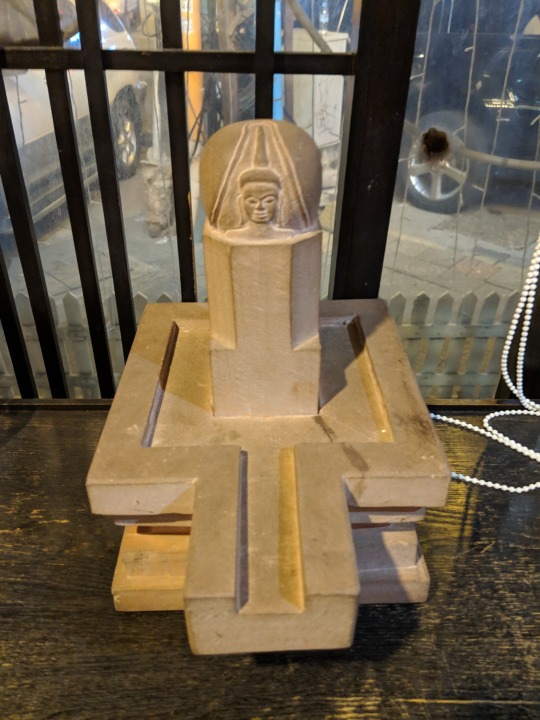
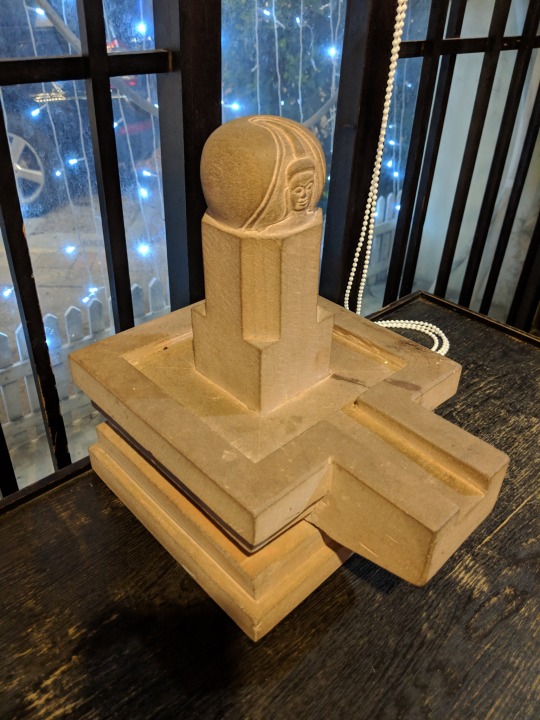
Mukhaliñga
The traditional aniconic representation of Lord Śiva in form of the Liñga – this representation is unusual in that the octagonal and cuboid bases of the Liñga are depicted over the Yoni patala or base.
Contemporary stonework, Thailand
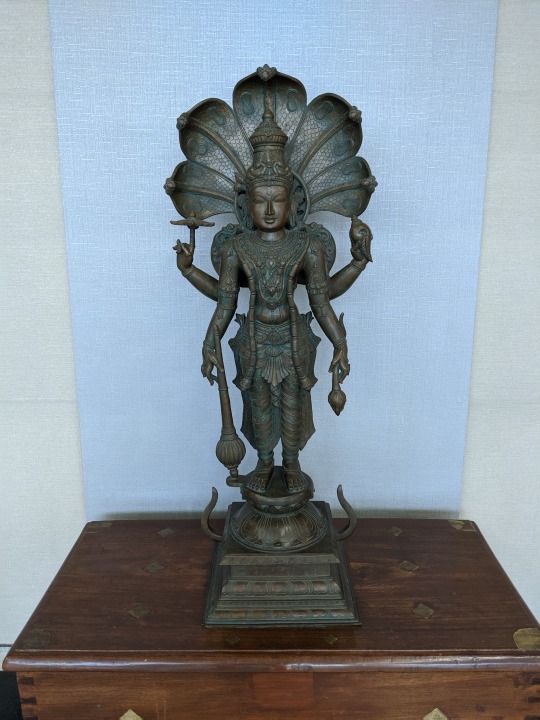

Caturbhuja Śṛī Mahā Viṣṇu
Contemporary Bronzework in the Chola Tradition
Chennai
GaruḍawithNāga
Garuḍa, the vahana or vehicle of Śṛī Viṣṇu, often depicted combatting serpents or nāgas, is a popular motif in south-east Asian Hindu sculpture. This magnificent and surprisingly well-preserved pediment is representative of Cham artwork in the collections of the Saigon Museum
Sandstone pediment, circa 10th Century CE
Museum of Vietnamese History, Saigon
Post link

